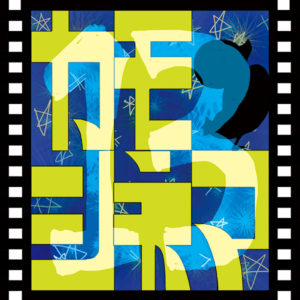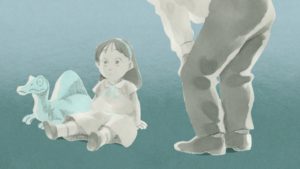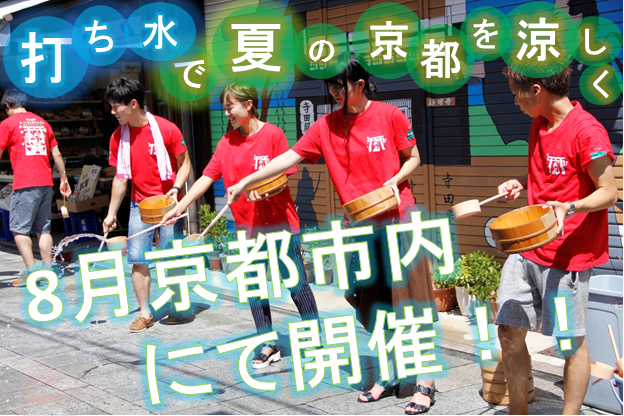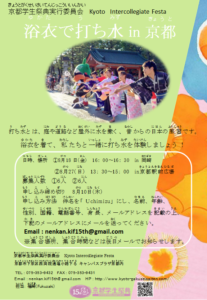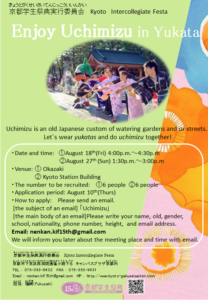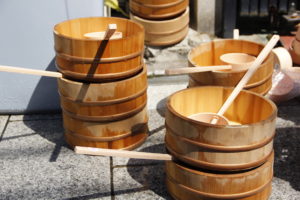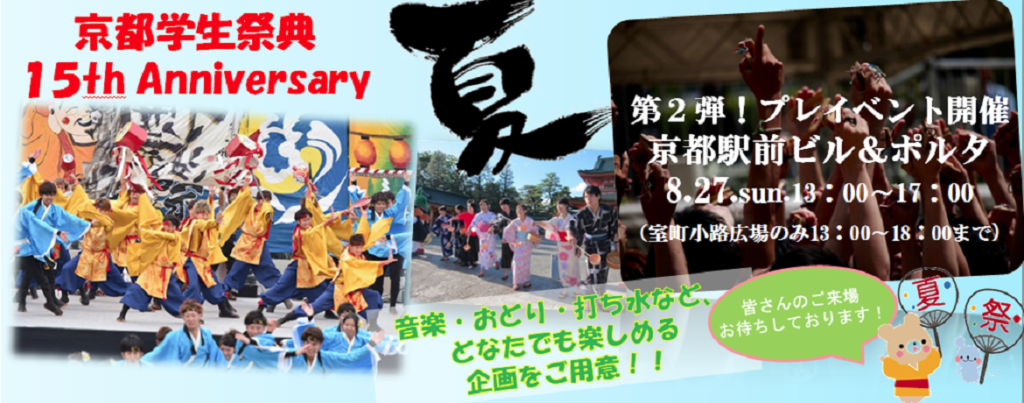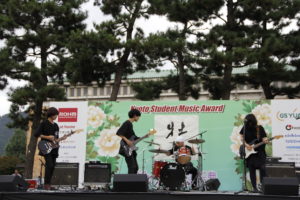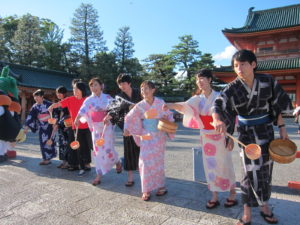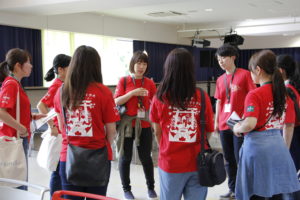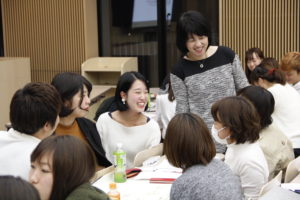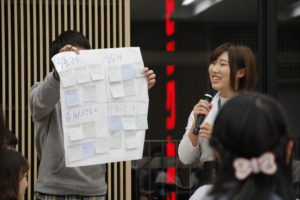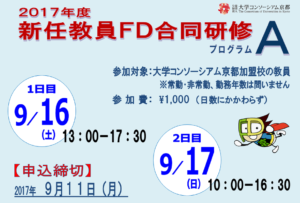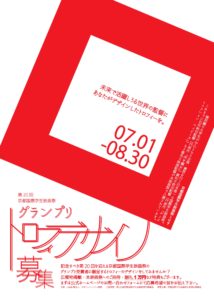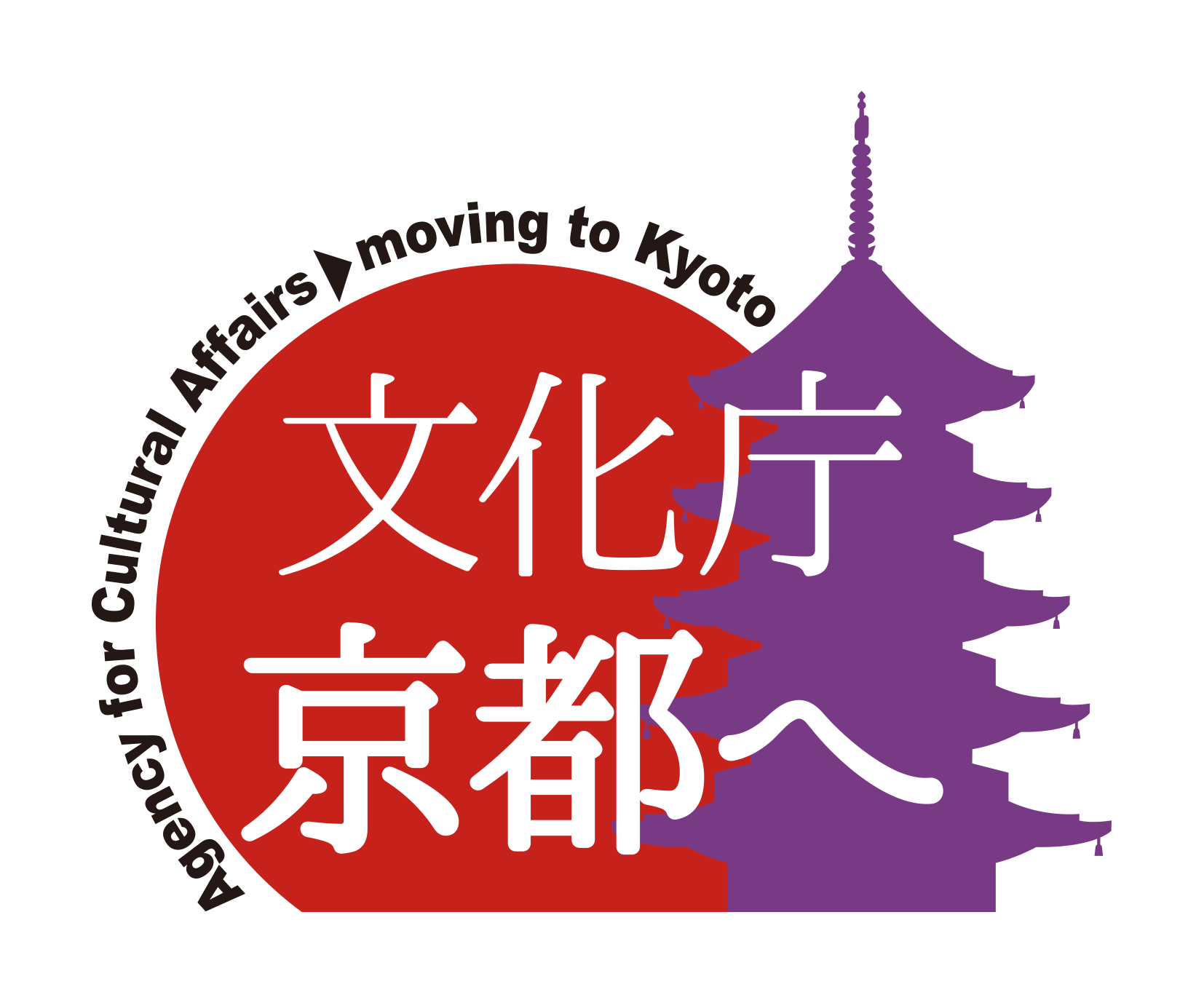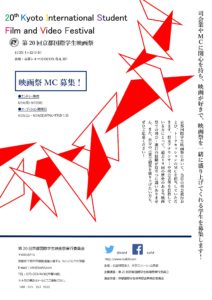
◆ Application period
Entry period: Monday, August 14 – Sunday, September 17
Audition date: Saturday, September 23 or Sunday, September 24 Venue: Campus Plaza Kyoto
◆ Number of applicants
4 people
◆ Eligibility
・Students living in Kansai (university, junior college, vocational school)
・ You must like movies and be willing to liven up the film festival together.
・You must be able to participate in the audition (September 23rd or 24th).
・You must be able to participate for at least 3 days during any of the festivals (November 25 to December 1).
・ Be able to watch the screening program of the talk show you are in charge of in advance (about 2 hours per program)
・Prior meetings
with the person in charge of the festival executive committee in Kyoto City in October or November * MC experience is not required.
◆ How to apply
(1) Please enter using the inquiry form on the official website of the Kyoto International Student Film Festival.
Inquiry items: Other inquiries
Name: Kyoko Movie
Phone number: 080-××××-××××
E-mail address: eiga.love@kisfvf.ne.jp
Inquiry content: 〇〇 University〇〇 Faculty 〇〇 Department ◯ Regenerative Movie Kyoko. I would like to apply for the MC project.
* Other affiliations (please answer if you have a broadcasting station, announcer school, etc.)
(2) An e-mail with the entry sheet attached will be sent from the Executive Committee.
(3) Please fill in the necessary information on the entry sheet and reply to the Executive Committee.
(4) As soon as the contents of the entry sheet are confirmed, the Executive Committee will send you a confirmation email.
◆ Notes on application
(1) There is no charge for participation in this project. (Please bear your own transportation expenses for auditions and meetings, and other expenses for application.)
(2) If you are selected, you will be responsible for your own transportation expenses to the festival venue.
(3) The personal information entered at the time of application will be used only for the purpose related to this project.
◆ Screening and Announcement of Applicants
Based on auditions in the form of a mock talk show, the selection will be made by the executive committee of this festival. In addition, the results of the selection will be announced by e-mail to applicants and on the festival’s official social media accounts. Please refrain from asking questions or objecting to the results of the examination.
20th Kyoto International Student Film Festival Executive Committee, MC Recruitment Project Receptionist
TEL: 075-353-9430 (Closed on Mondays) *If you are not available, please contact us by e-mail.
Address: info ■ kisfvf.com (Please change ■ to @ and send)
Kyoto International Student Film Festival Executive Committee Official Website














